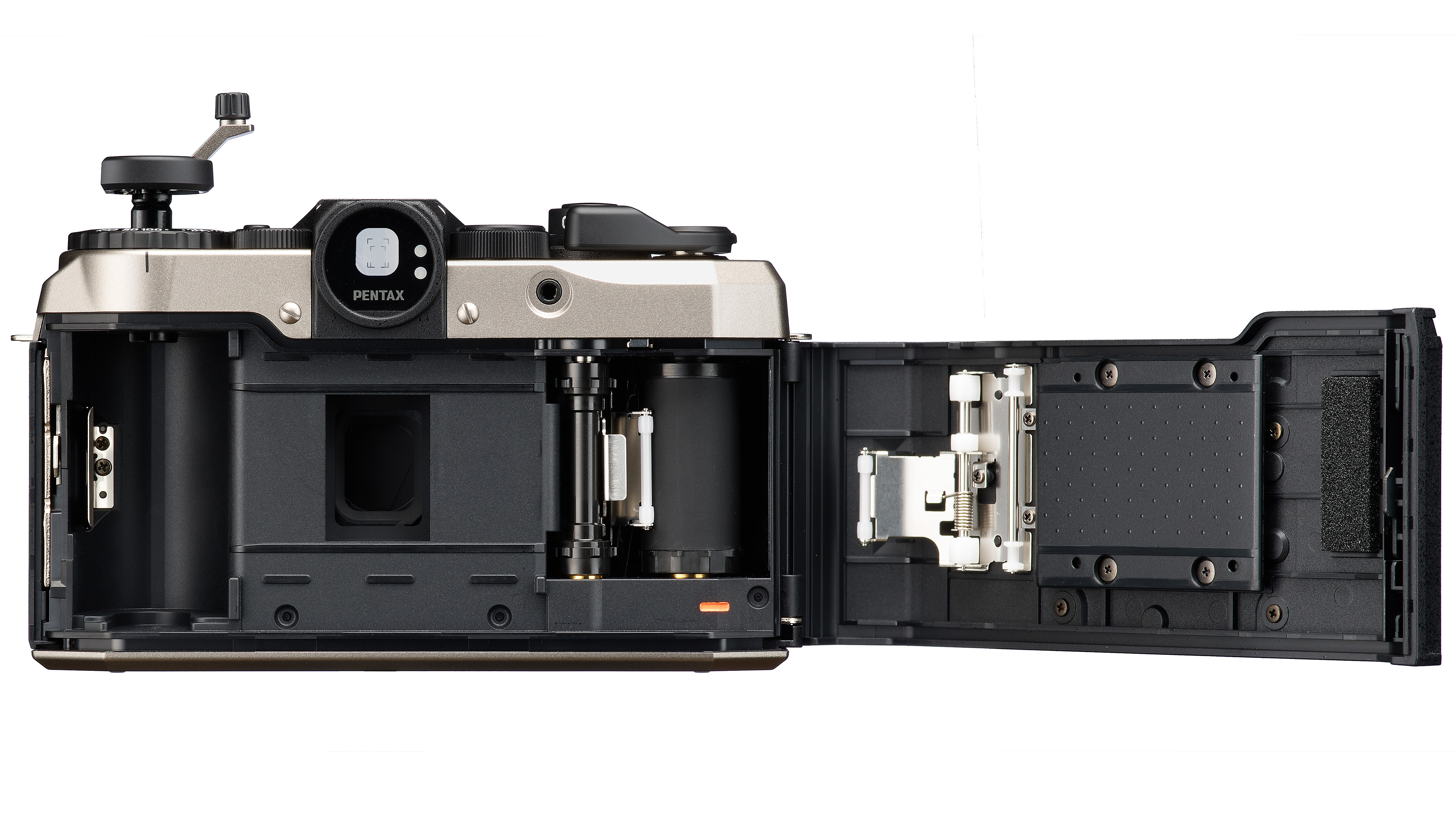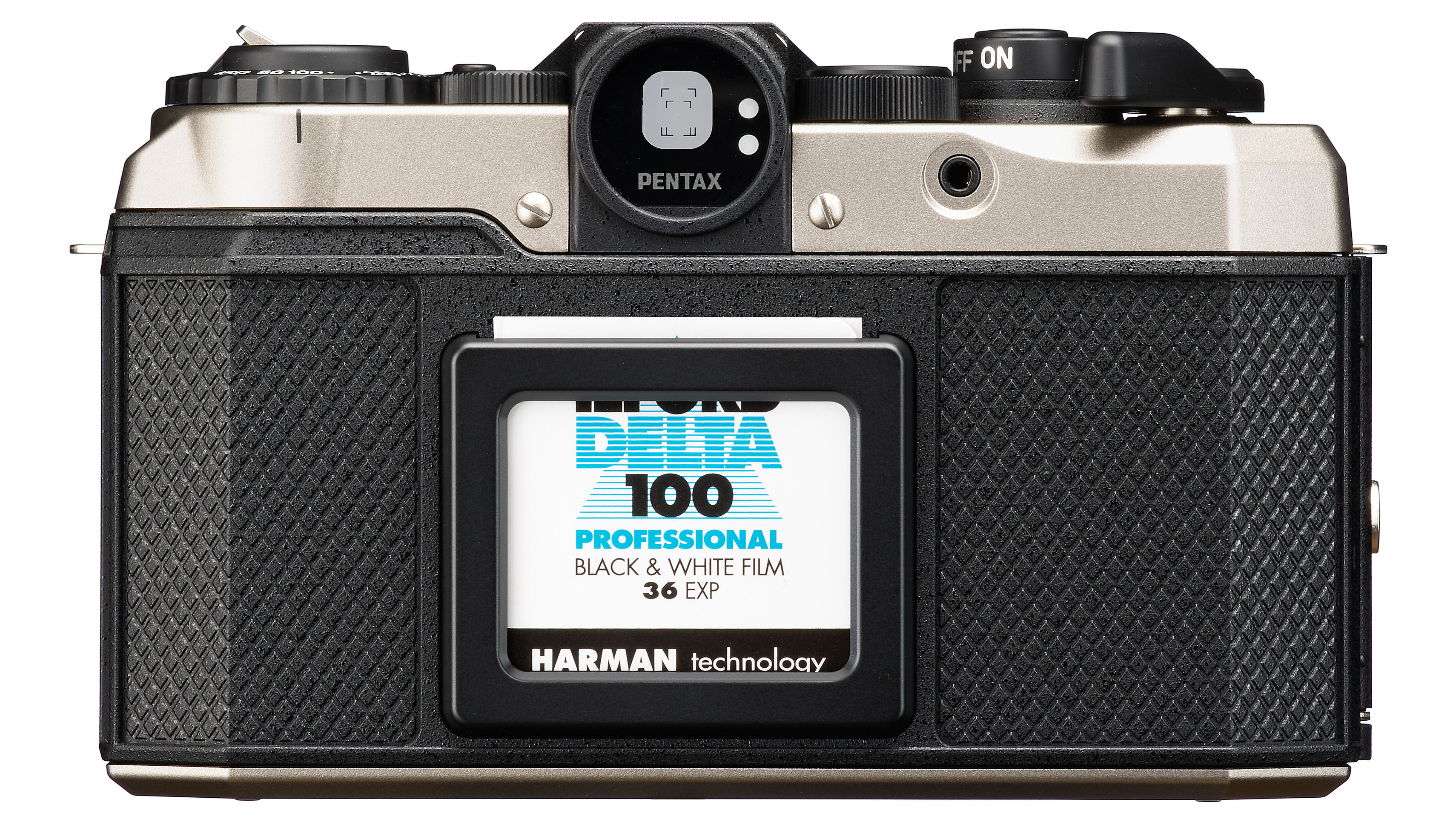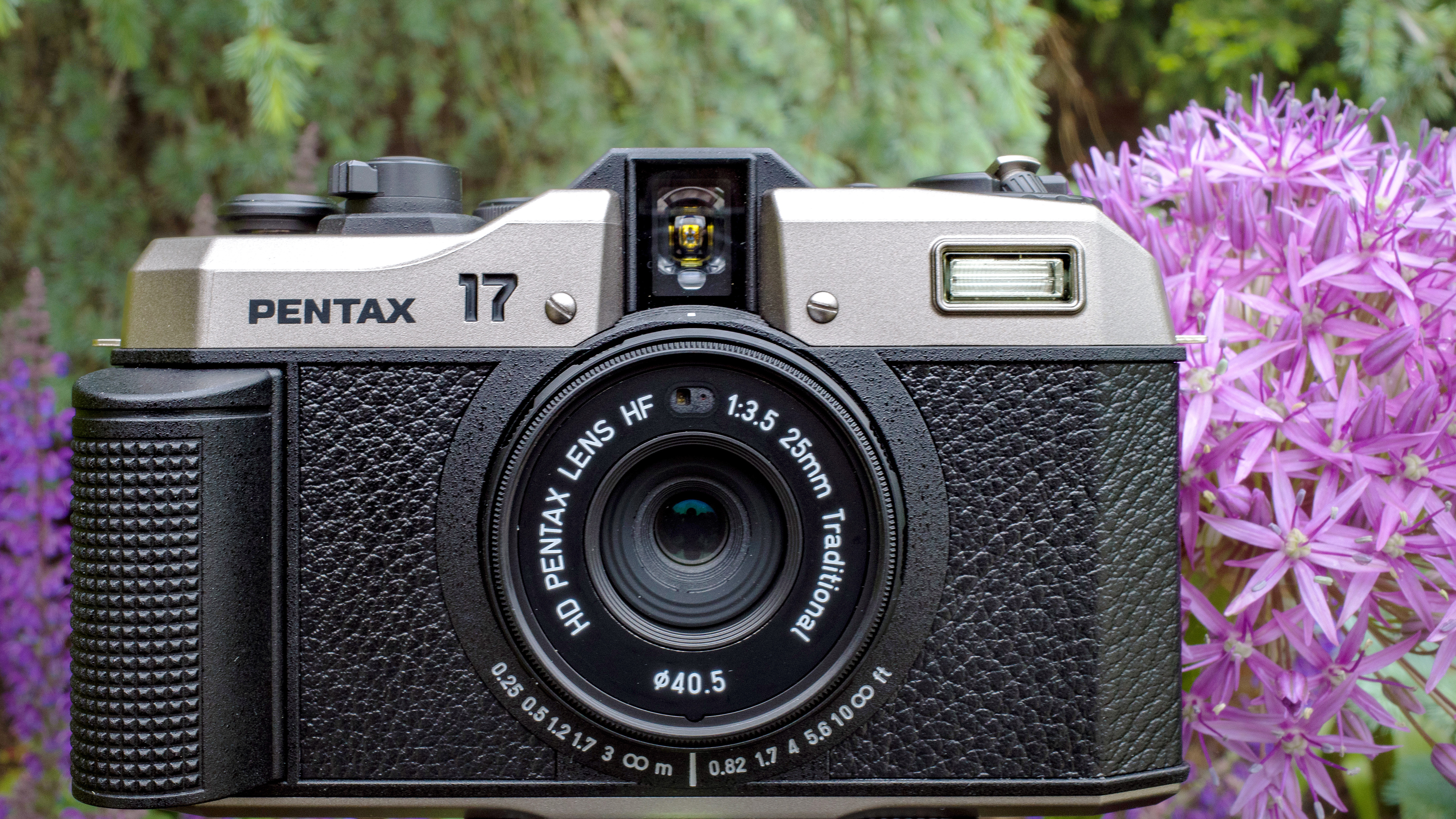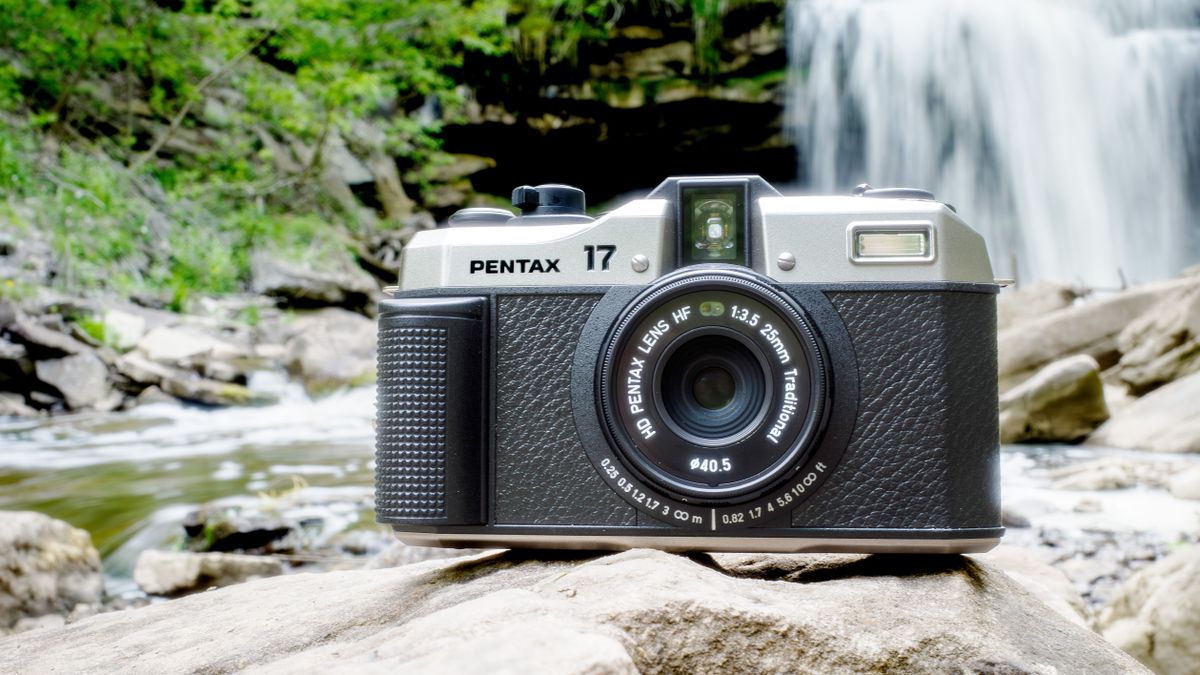Pentax, the legendary Japanese camera company founded in 1919 as Asahi Optical, hasn’t released a new film camera in more than 20 years. Given society’s move toward standalone digital cameras and ultimately, fully integrated smartphone cameras, this drought isn’t too surprising.
However, with analog photography gaining in popularity over the past few years, particularly among millennials and Gen Z craving a more intentional creative process, it was only a matter of time before one of the OG camera companies took notice.
Pentax’s new film camera, the Pentax 17, isn’t a rehash of an existing camera from the archive but a totally new model, built from the ground up and designed by one of the brand’s legendary engineers, Toshiyuki Kitazawa. He happened to come out of retirement to work on the project and drop some knowledge on the current generation of Pentax designers, much to the delight of analog camera nerds everywhere.
I had the chance to learn about the new Pentax 17 prior to launch, and though I’ve yet to get one in my hands, I’m seriously impressed by all the little things Pentax seemingly got right, from making it a half-frame model with double the shots to constructing it out of premium materials built to last.
The Pentax 17 has all the makings of the perfect travel companion for casual and serious photographers alike. Here are five reasons why I plan to take one along on my next adventure.
1. Pentax 17 – Double the shots per roll of film
The Pentax 17 is a half-frame camera, which means each horizontal 35mm frame is actually split into two vertical ones, resulting in 48 shots per roll when using a standard 24-exposure film cartridge and 72 shots per roll when using a roll of 36 exposures.
For traveling, this means more time snapping away and less time rewinding and swapping out film. It also means you don’t need to carry as many rolls with you. From a creative perspective, half-frame cameras are a really fun tool for making diptychs.
Finally, with film prices at an all-time high and developing/scanning costing roughly another ~$20 per roll, a half-frame camera is an economical way to squeeze as much potential out of your favorite film stock as possible.

2. Pentax 17 – Small, tough and reliable
One advantage film cameras often have over their digital counterparts is greater longevity when it comes to battery life. The Pentax 17 is no exception. It’s powered by a single CR2 3-volt battery that’s good for a whopping 700-plus frames, though it’s not compatible with rechargeable CR2s.
Built from magnesium alloy, the camera weighs just 10.2 ounces and is small enough to slip into a jacket pocket. There’s also virtually no delay when the camera is switched on; it’s ready to shoot as soon as you are, assuming the manual film lever has been pre-advanced. This makes it a great option for street photography and travel candids.
3. Pentax 17 – Simple control designed for any user

The Pentax 17 sports a fixed 25mm f/3.5 lens with a 37mm equivalent field of view (in full-frame terms). The optical design is based on the lens used in the Pentax Espio Mini, a fully automatic compact camera released in the mid-1990s known for its sharp glass.
To keep things simple, the Pentax 17 skips autofocus and instead offers a zone-focusing system with six zones to select from, depending on your subject’s distance. This system takes a little getting used to, but it ultimately leads to less futzing and more snapping. The camera also offers both automatic exposure settings as well as completely manual ones. There’s even an exposure compensation dial for fine-tuning.
For low-light photography, a respectably powerful built-in flash should be able to illuminate subjects up to 20 feet away at full power. Of course, you can dial things down when shooting closer people or for creative effect.
4. Pentax 17 – the price is high but fair
Priced at $499.95, the Pentax 17 is much more affordable than comparable fixed-lens digital cameras, like the Fujifilm X100VI, which will set you back $1599, assuming you can actually find one in stock somewhere. And with “high-end” used compact cameras, like the Olympus Stylus Epic, selling for upwards of $250 despite being 20+ years old and built from plastic, the Pentax 17 is a welcomed release.
With the average roll of film priced around $10 — you can easily knock that in half if you buy in bulk/roll your own — and processing/scans in the neighborhood of $20 a roll, you’re spending roughly $0.42 per frame.
By comparison, Fujifilm Instax Mini film, the most popular instant photography format, costs roughly $0.70 per shot, making half-frame the better bargain with a significantly larger image size output potential. Of course, the best instant cameras start at under $100.

5. Pentax 17 – a true homage to Pentax’s storied camera history
As mentioned, Pentax tapped one of the brand’s legendary engineers to help design the Pentax 17. Mr. Kitazawa is most notably known for designing the Pentax KP, one of my favorite film SLRs ever.
In many ways, the Pentax 17 is an homage to the brand’s long and celebrated camera manufacturing history and contains no fewer than 10 “easter eggs” for film camera nerds to discover. The film advance lever, for example, is based on one of Pentax’s most beloved found on the Pentax Auto 110 from 1978. The shutter release is similar to the one on the modern modern digital Pentax KP.
Ultimately, Pentax has put together what is easily the most exciting film camera to launch in the 21st century, in my opinion, from design to features to build quality. And I can’t wait to load one up with some freezer-burnt Fujifilm Natura 1600 and get shooting once they go on sale later this week.



)






